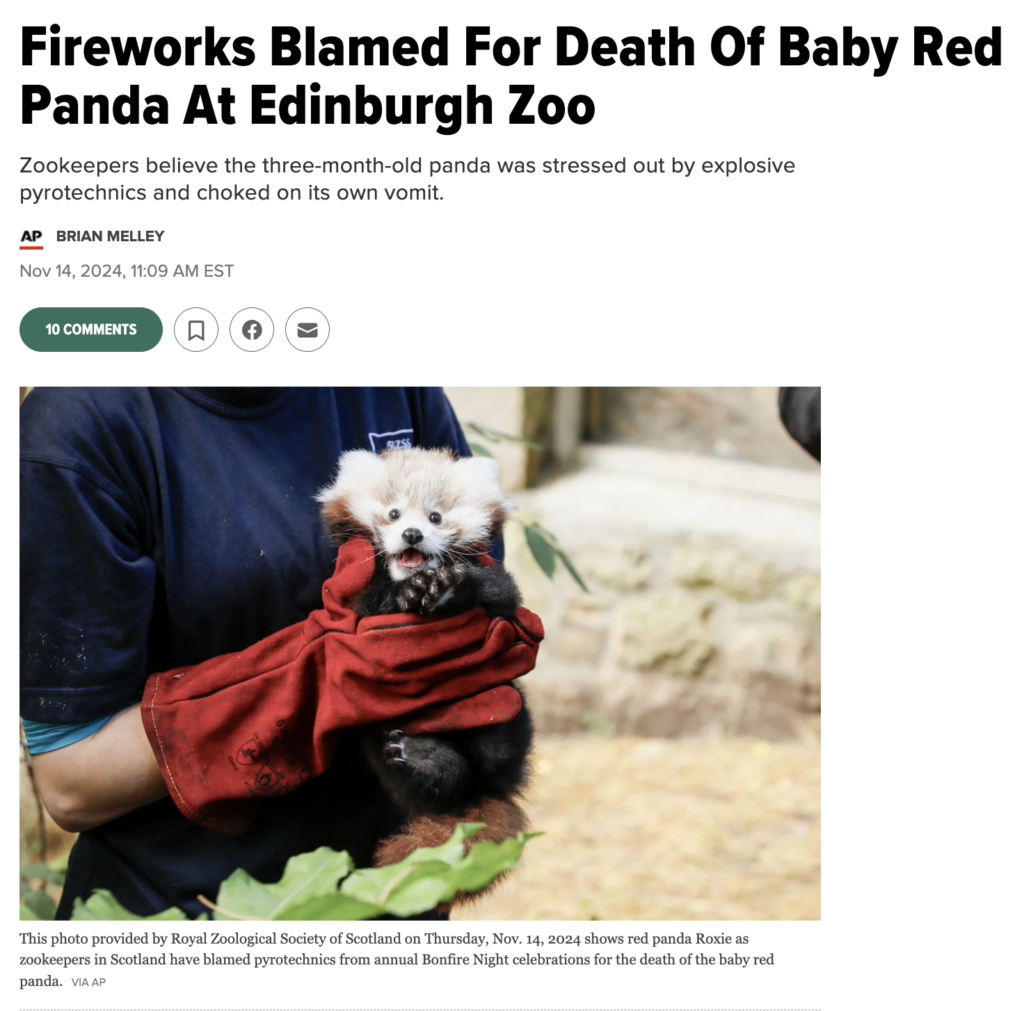Ah, fireworks—the loud, colorful phenomenon that we all collectively agreed upon should be part of every celebration, no matter how disastrous the consequences may be. These ancient Chinese creations (dating back to the second century B.C., if you can believe it) were originally crafted using bamboo and gunpowder with the noble intent of warding off evil spirits. China remains the largest manufacturer and exporter of fireworks in the world. Fast forward a whopping 2,000 years, and we’re still using these noisy contraptions to ward off—what exactly? Our hearing and the environment? Bravo, humanity.
From Firecracker to Fire Danger Zone. By the time the 15th century rolled around, Europeans decided it was a brilliant idea to import this chaos for their religious festivals and public celebrations. And guess what? The U.S. joined the trend and easily combined it into our favorite Independence Day celebrations. Nothing screams freedom quite like the release of 428.8 million pounds of explosive material into the night sky, right?
Of course, we shall ignore the little things like health problems and air pollution; who needs fresh air anyway?


The pollution generated during this festival has been reported to increase the concentrations of various elements like Ba, K, Sr, Mg, Na, S, Al, Cl, Mn, Ca, and EC by factors ranging from 1.6 to 264. The induced pollution due to Diwali fireworks has been assessed using in situ monitoring sites and MODIS retrievals, suggesting a nationwide increase in PM of over 50% during the festival days compared to background concentrations. Adverse meteorological conditions, such as a decrease in the atmospheric boundary layer height and surface winds, also exacerbate pollutant concentrations during Diwali and every day for some or the other occasion and on other occasions throughout the year.
Despite the short-term nature of these events, the sheer volume of fireworks used in India contributes significantly to air pollution. The National Institute of Technology in Jamshedpur, India, found that pollution levels spiked by up to 27% immediately following Diwali fireworks.
However, while they light up the sky and bring joy, fireworks come with significant environmental and health concerns.
Environmental Effects of Fireworks
The impact of fireworks on the environment is considerable and can be understood through a few key areas:
- Air Pollution: When fireworks are ignited, they release particulate matter (like PM2.5 and PM10) into the air, which can linger for days and can lead to a drastic increase in air pollution levels. For example, during festivals, air quality can worsen significantly, like during Diwali in India when PM levels soared to over 900 µg/m³ in 2017, far above the safe limit set by the World Health Organization.
- Chemical Contamination: Fireworks contain various chemicals and metals used to create colors and effects. Common components include potassium nitrate and heavy metals like strontium and barium. These substances can leach into the soil and water after use, posing long-term environmental risks. Studies found increased levels of harmful substances in soil and water following fireworks displays, indicating persistent contamination.
- Impact on Water Bodies: Debris from fireworks can settle in water sources, leading to significantly increased microplastic levels and contamination that endangers aquatic life. For instance, fireworks shows in London were linked to a dramatic rise in microplastics in the River Thames.
- Wildfire Risk: Fireworks can easily ignite dry vegetation, particularly in areas prone to wildfires, which can lead to devastating consequences for wildlife and their habitats. For example, a Fourth of July fireworks display in Utah resulted in a wildfire that led to the evacuation of hundreds.
- Wildlife Impact: Loud explosions and bright flashes from fireworks can scare animals, leading to stress, disorientation, and sometimes injury or death. Birds have been known to flee their habitats or even fly at dangerous altitudes to escape the noise.
Health Issues Related to Fireworks
The health implications of fireworks primarily stem from the pollutants they release:
- Respiratory Problems: The fine particles released can irritate the lungs. They can worsen conditions like asthma, leading to increased health issues during firework-heavy events, particularly among vulnerable populations such as children and the elderly.
- Exposure to Toxic Metals: Inhalation of smoke from fireworks can introduce harmful metals such as barium and lead into the body, which can have serious health consequences over time, including potential cancer risks.
- Vulnerable Populations: Groups such as children and those with pre-existing health conditions are more susceptible to the negative effects of firework pollution and may experience exacerbated respiratory issues.
Given the environmental and health impacts, many communities are looking into alternatives to traditional fireworks:
- Some regions have enacted bans or regulations reducing the use of fireworks. For example, Zhengzhou, China, prohibited fireworks, leading to marked improvements in air quality.
- People can minimize their exposure by monitoring local air quality reports, staying indoors during displays, and supporting community efforts for greener celebrations.
While fireworks can be mesmerizing, their impact on health and the environment is significant. By understanding these effects and considering alternative celebratory methods, we can enjoy the beauty of festivities without compromising our health or our planet.
Ref:
- Effects of fireworks on air quality and public health in a narrow tropical valley. [ https://pmc.ncbi.nlm.nih.gov/articles/PMC6890629/]
- Potential impact of fireworks on respiratory health. [ https://pmc.ncbi.nlm.nih.gov/articles/PMC4220320/ ]
- The hidden toll of July Fourth fireworks. [ https://www.nationalgeographic.com/environment/article/the-hidden-toll-of-july-fourth-fireworks ]
- Environmental Impact of Fireworks: The Hidden Toll of Independence Day. [ https://www.medindia.net/news/healthwatch/environmental-impact-of-fireworks-the-hidden-toll-of-independence-day-212551-1.htm ]
- Environmental Impact of Fireworks. [ https://earth.org/environmental-impact-of-fireworks/ ]
- How fireworks impact the environment and human health. [ https://www.footprint-intelligence.com/blog/how-fireworks-impact-the-environment-and-human-health ]
- Impact of fireworks on air quality and respiratory health: A review. [ https://pmc.ncbi.nlm.nih.gov/articles/PMC4220320/ ]
- Fireworks’ Hidden Dangers. [ https://www.lung.org/blog/fireworks-hidden-dangers ]
- The environmental impact of fireworks. [ https://www.compoundchem.com/2017/01/05/fireworks-environment/ ]
- Short-term bang of fireworks has long-term impact on wildlife: study. [https://www.curtin.edu.au/news/media-release/short-term-bang-of-fireworks-has-long-term-impact-on-wildlife-study/]
- Are Fireworks Bad for the Environment? [ https://www.treehugger.com/are-fireworks-bad-for-the-environment-4864146 ]
- Are Firework Pollutants Harming your Health? [ https://www.nfcr.org/blog/are-firework-pollutants-harming-your-health/]
- Are fireworks bad for the environment? What to know for this July 4th. [ https://www.michiganpublic.org/environment-climate-change/2025-07-04/are-fireworks-bad-for-the-environment-what-to-know-for-this-july-4th ]
- Are Fireworks Bad? [ https://jtechconst.com/blog/are-fireworks-bad/ ]
- How do fireworks harm the environment? [ https://delawarecurrents.org/2024/07/01/how-do-fireworks-harm-the-environment/ ]
- The hidden toll of July Fourth fireworks. [ https://www.nationalgeographic.com/environment/article/the-hidden-toll-of-july-fourth-fireworks ]
- Effect of fireworks show on the amount and elemental concentration of foliage dust. [ https://pmc.ncbi.nlm.nih.gov/articles/PMC4519581/ ]
Also Read:
